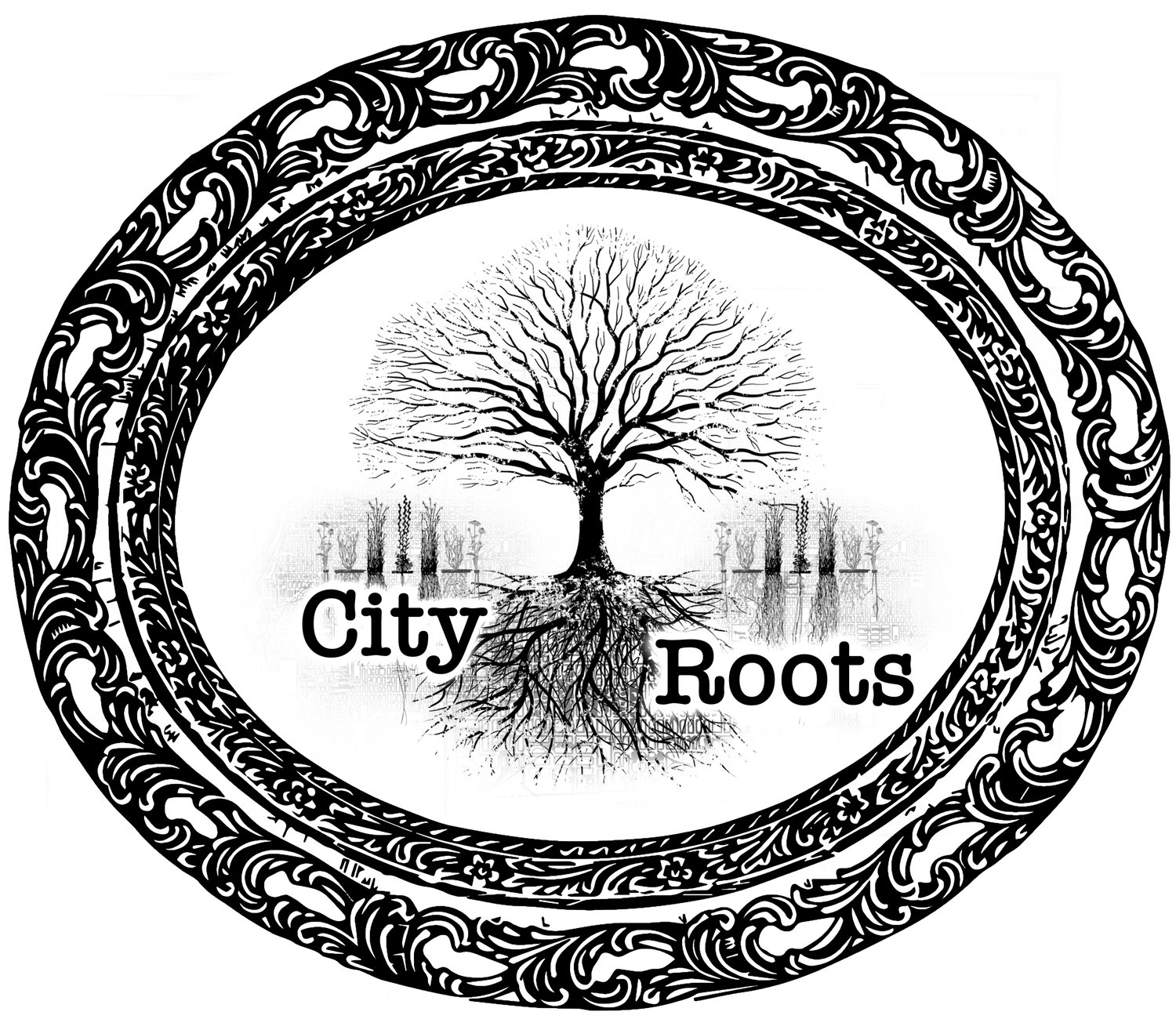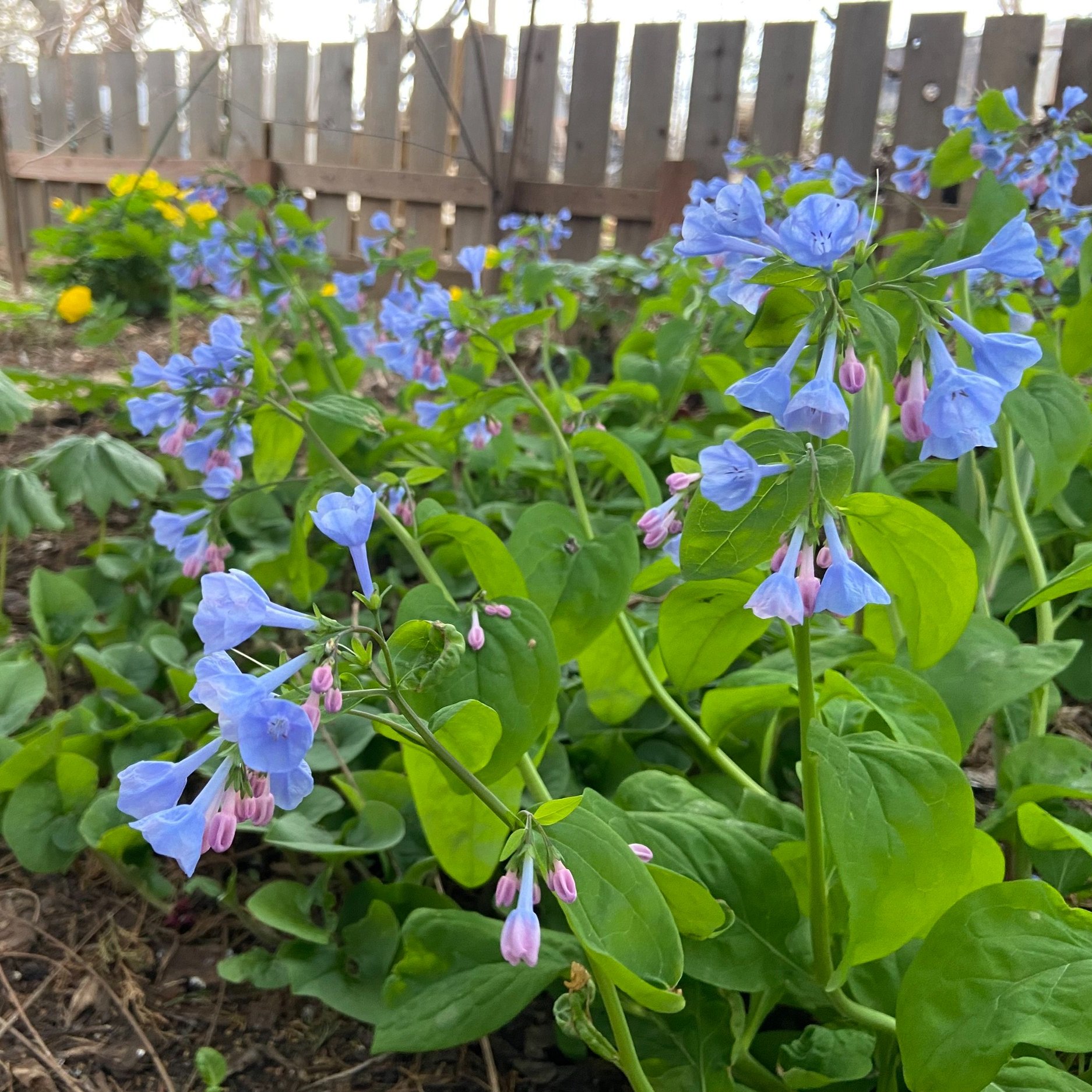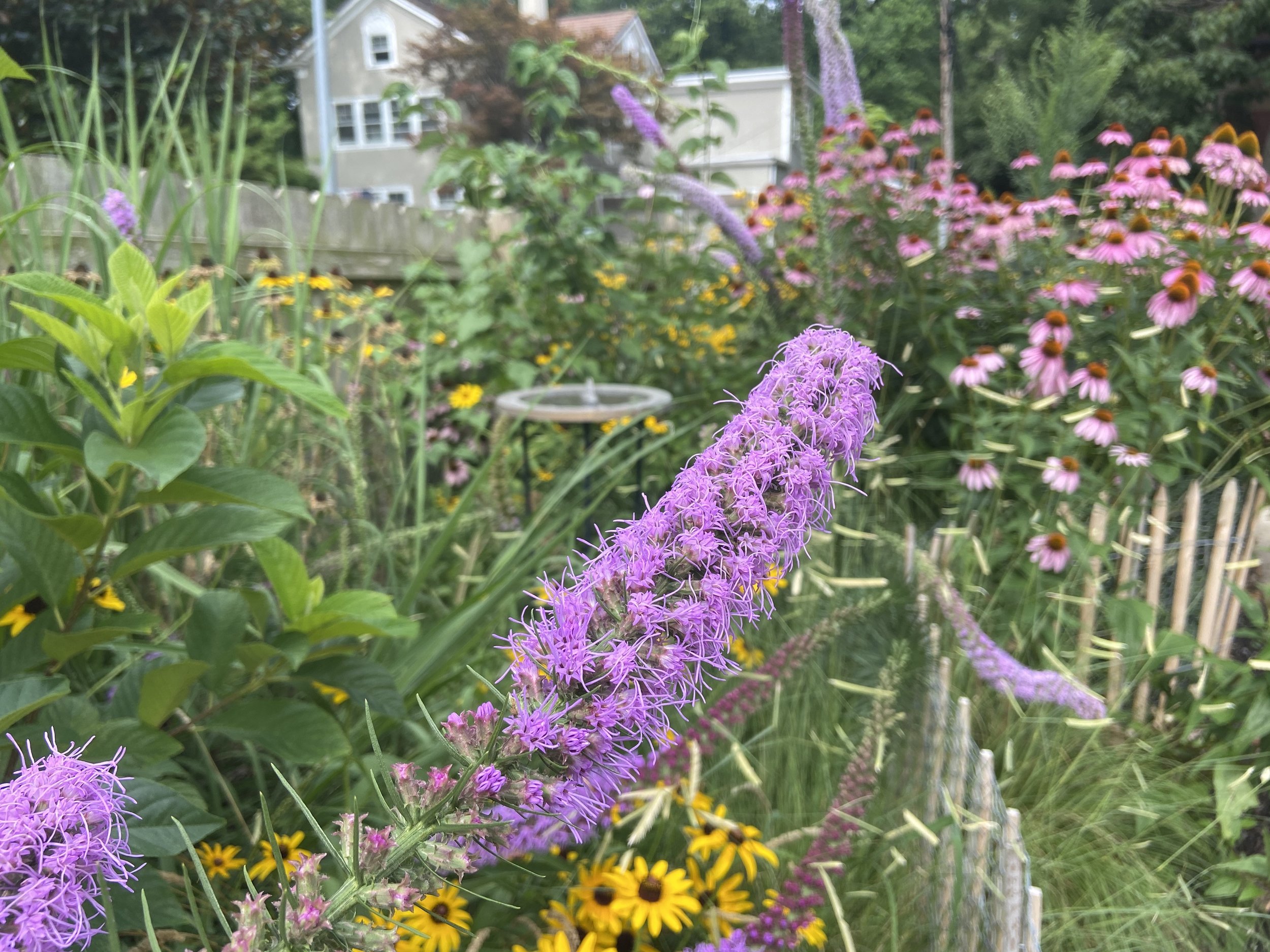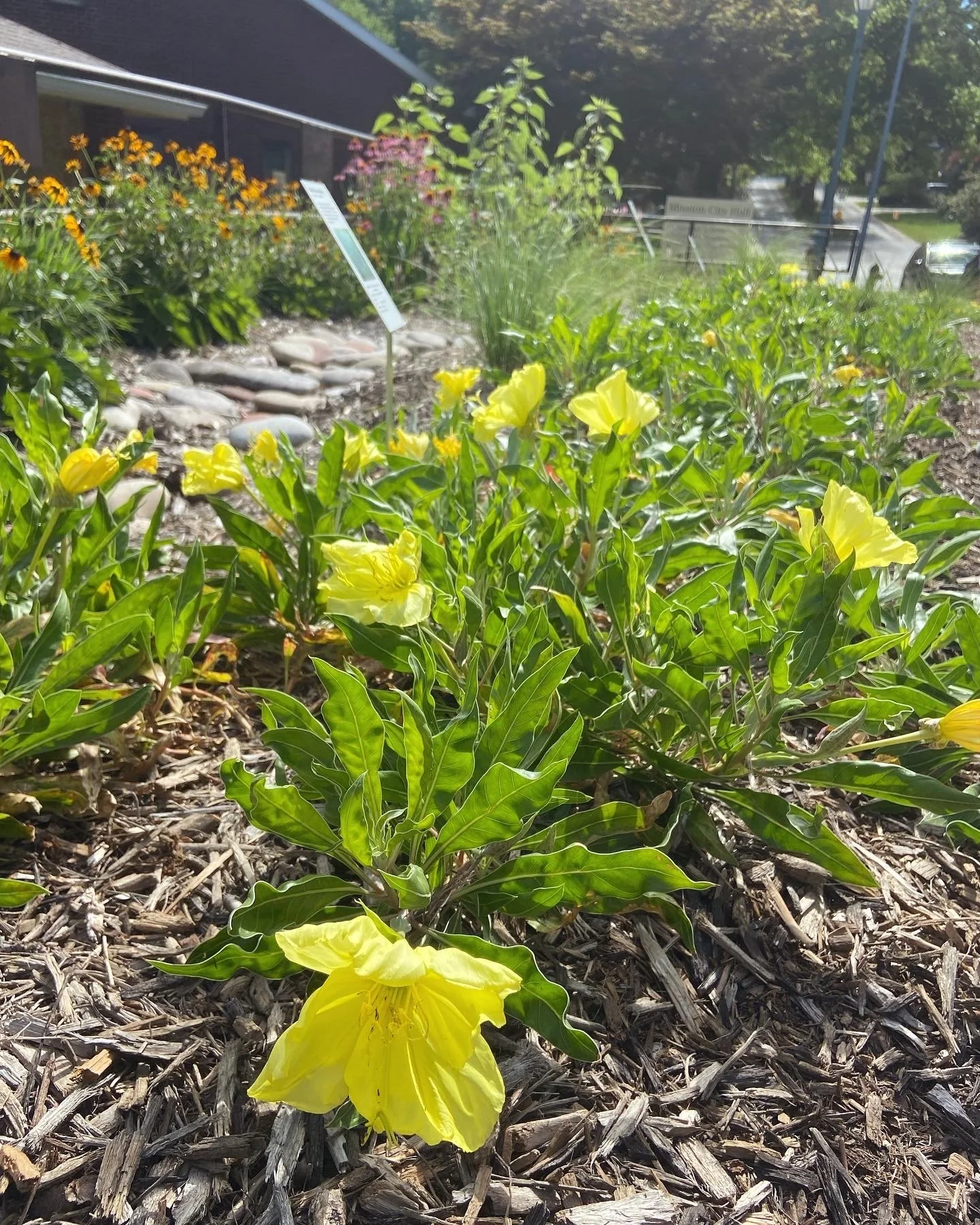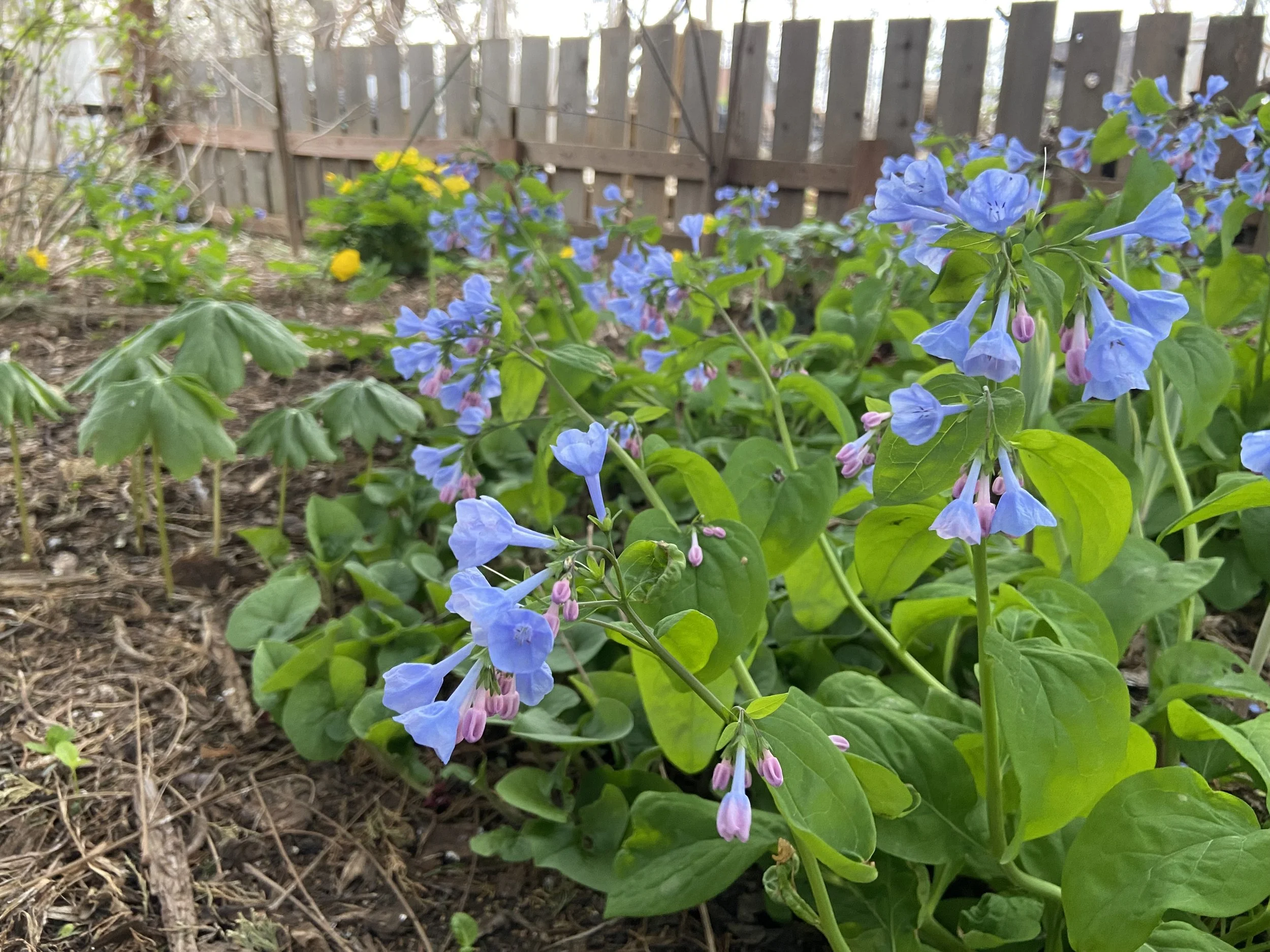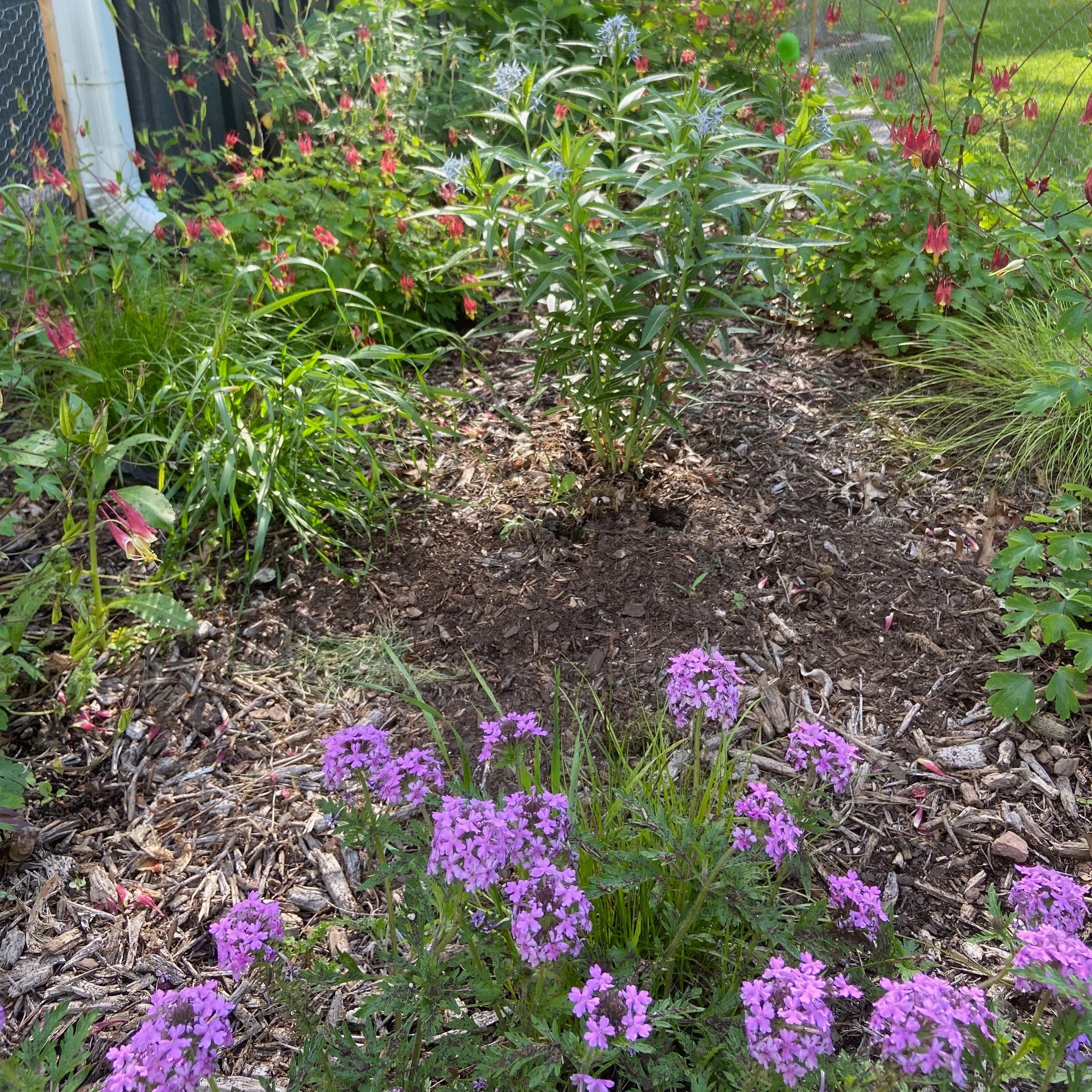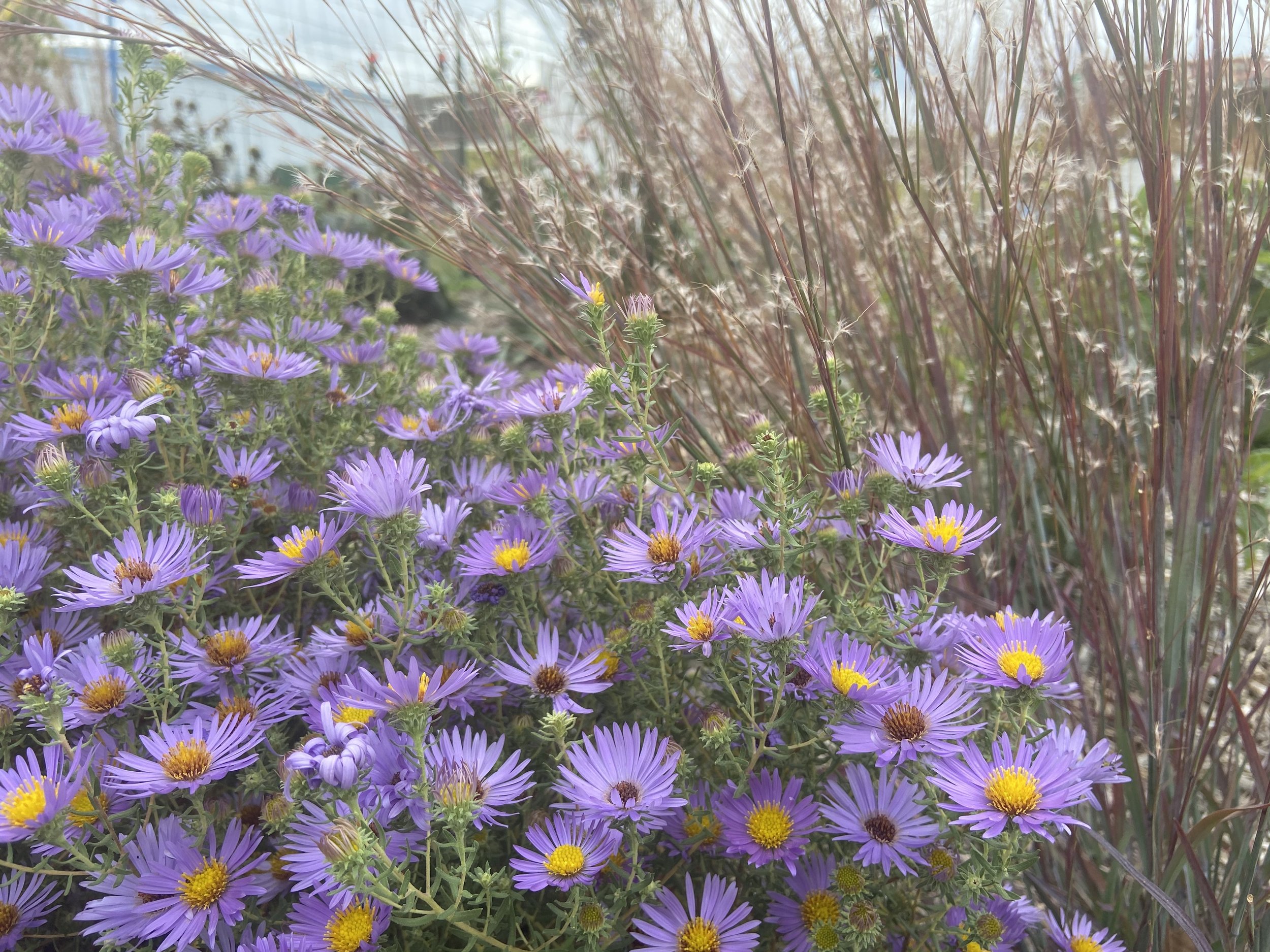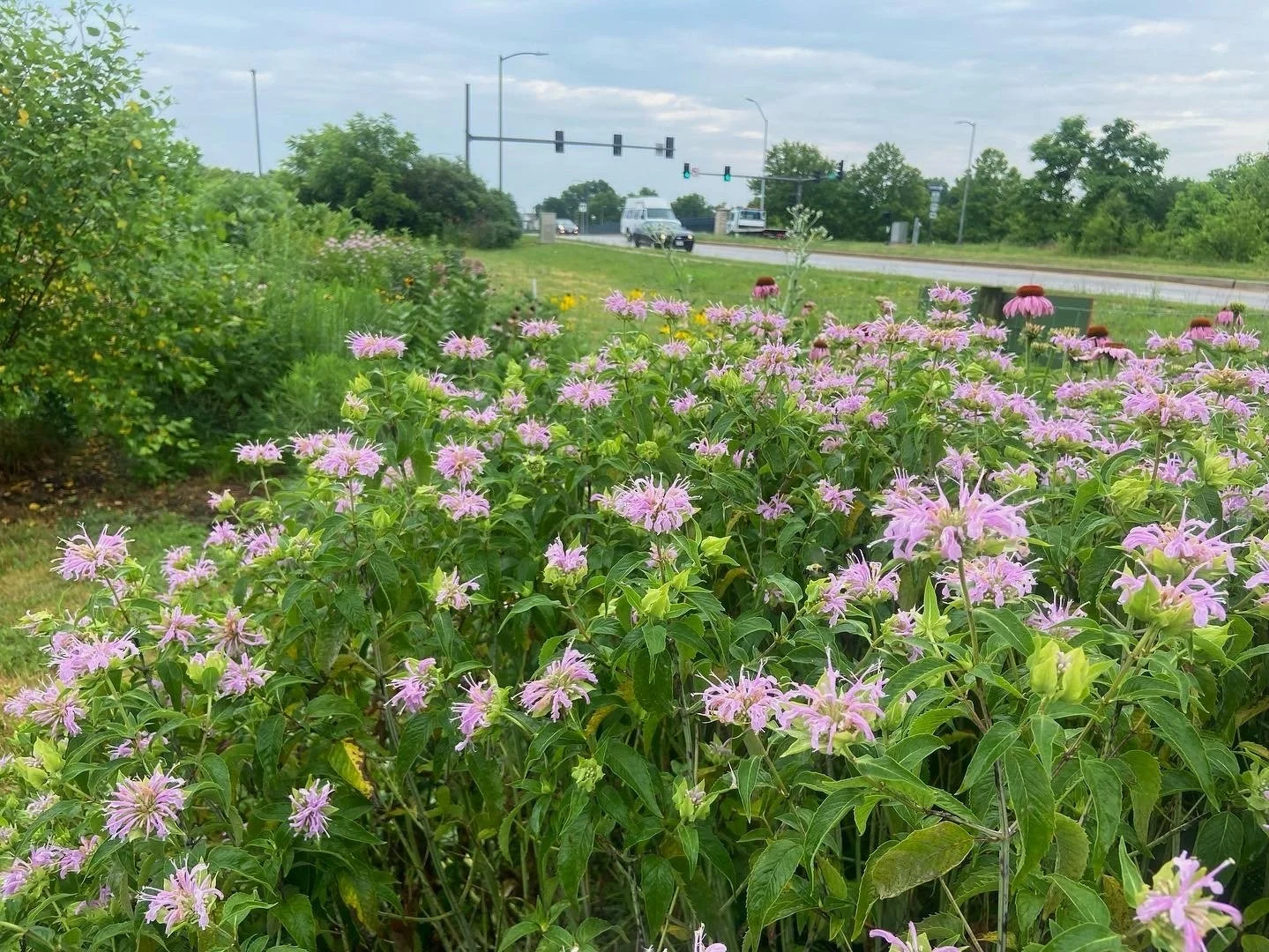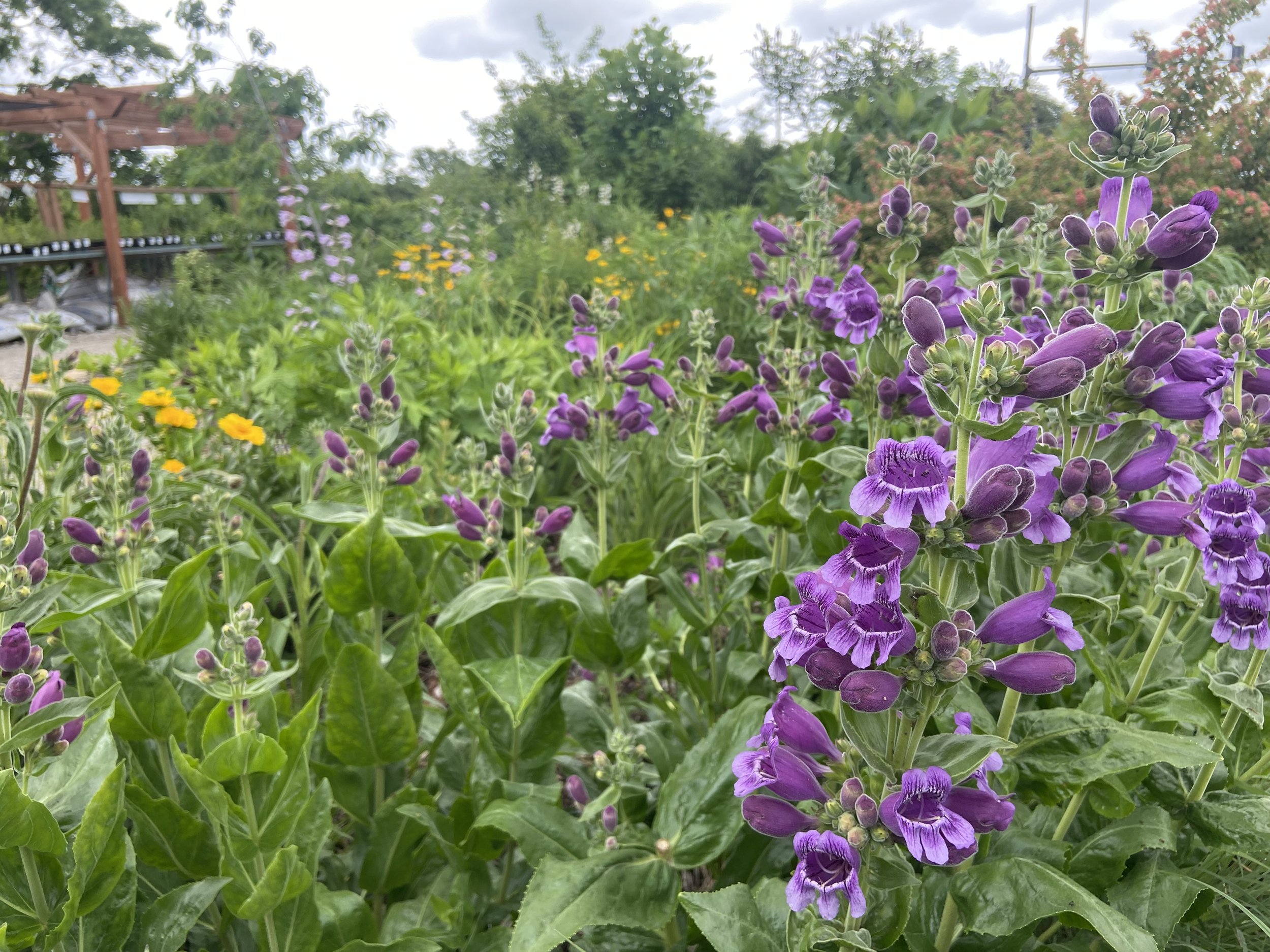
Choosing Native Plants for your garden:
There really is no going wrong with a native planting if your goal is improving the natural world and provide ecosystem services. Especially if you live in a urban or suburban area with very little habitat left for local wildlife. Sometimes designs help in front yards, formal gardens, or areas where the landscape needs to look legible for you, or your neighbors.
To create a native garden that is both visually pleasing and beneficial to wildlife, we first need to ask ourselves what are our personal tastes are and how much maintenance can we reasonably do. In this guide we will touch on some different garden styles and how to design your planting. On the Maintenance page of our web site we go more in-depth on maintenance techniques and tools that can can be used to make maintenance more efficient.
Garden Styles: When starting a new garden or planting project a good place to start is to ask yourself what style of garden are you trying to create. Do you want your garden to be clean, tidy, and organized, or more naturalized? Do you want to large clumps of the same species, or do you want all species mixed together? Do you want high diversity, or low diversity? How much maintenance are you willing or able to do? A large, very organized garden takes a lot of maintenance , but a large naturalized garden requires less time. High diversity adds stability to the garden and benefits a larger variety of wildlife, but may look messy to some people. Low diversity at the beginning is usually best for new gardeners as it gives them a chance to get acquainted with their new plants and learn their growth habits in order to better maintain the garden in the future. It is always easy and fun to add a few new plants every season to boost diversity. We have listed common garden styles below and their maintenance requirements.
Clean & Tidy: This style most mimics the conventional landscapes we see in many urban and suburban areas with clean lines and mounding shapes. This can be achieved by using 5-10 species in large clumps or in organized lines. While this garden may look the most structured and conventionally organized, it by far requires the most maintenance. Maintaining the landscape will require someone to edit plants from unwanted areas to maintain the shape of the garden. Shorter lived perennials may need to be replaced if the previous years did not yield good enough seed crops to provide new plants, or if the seed heads were removed and not allowed to drop seed. These gardens are best for areas that need to look formal in commercial or residential areas. While these plantings require a lot of time to keep the plants looking organized and in their places, it is relatively easy work for beginners, or unskilled landscapers to edit out unwanted plants, deadhead old seed heads and replant plants as needed.
Naturalized: This method is attempting to mimic nature as best we can in urban or suburban area. The initial planting will usually have a high diversity of plants. Once established, maintenance will be weeding out invasive or other undesirable plants. Occasionally you may need to move plants that have become to aggressive for the planting and add more plants or seed to any empty spots. This method invites you to keep experimenting and keep adding new species.
Tossed Salad: This method is a hybrid of the large clumps & naturalized option. This method is best for beginners who are ultimately looking for a naturalized area, but want the garden to develop incrementally. To start this garden, pick between 7-15 species who are strong spreaders. Plant them in large clumps or masses and let them migrate over time. As you gain familiarity and confidence with your plants, you can add as many species as you are comfortable with every season.
Mulch vs Green Mulch: Mulch is a great inexpensive organic way to keep down weeds in your garden and help keep moisture in for the summer months in a new planting. Over time, it is best to use shorter native plants as green mulch. To do this use more ground covers and plant denser in your gardens. Using smaller plants in among your taller species like groundsels, pussytoes, alumroots, sedges, shorter grasses, and wild strawberry can create dense ground cover that like mulch will help keep the soil cooler in the summer and unwanted plants from growing.
Picking plants
Now that you have prepared your garden site, taken notes on your site observations and decided which style of garden you would like to go with, it is time to pick out plants. When picking out plants, check the bloom time of plants, how they spread, and their height.
Step 1: Calculating the number of plants needed. Generally, a dense planting made of smaller to medium sized species requires 1 plant per square foot. Planting sparsely to begin with can lead to unwanted weed pressure in the first few years of the planting. Buying plug trays of short ground cover plants can extend your budget and provide you with green mulch as your planting establishes
Step 2: Once you have your plant count, take note of how many plants you need for each area of the garden. how many for the shadier areas, the sunnier areas, the wetter areas, and drier areas. For example, 30% of your site may be in the shade and the rest of your site in sun.
Step 3: Begin to research and make a list of plants you find interesting that fit the parameters of your site. Be sure to add enough plants to your list that you have something blooming from April to October. Be sure the plants will fit within your height requirements and your maintenance goals. For example, if you desire a very organized planting, it is best not to plant plants that spread quickly by rhizomes, as they will be a pain to edit out of unwanted areas.
Step 4: Once you have your list, you can begin your layout
Layout
With any planting, you may want to draw out a layout of your area. We like to use graph paper and colored pencils to draw the layouts of our designs. We are mindful of site conditions, bloom time and height to begin with. We try to be mindful to place stronger spreading plants next to each other and not close to more delicate plants that may be slower spreaders. It can also be beneficial to put shorter lived plants that tend to reseed readily next to more structural, longer living plants. Baptisias close to Black Eyed Susan’s tend to do well, for example.
If you need help designing a structured layout for your garden, Sarah Beier of Oak and iO is an excellent designer in town and can help you realize your project goals.
Quick Tips:
How to find square footage: Length x Width = sqft
Layer plants from shortest to tallest
Plant large plants near each other to help them from falling over. Example: blazing stars surrounded by little bluestem
Sedges make great edges
Plant higher quantities of slow spreaders, lower quantities of aggressive spreaders
25% grasses & sedges to 75% flowering forbs
Quick plant estimate: 1 small plant per sqft
Check bloom times, try to have at least 1 or 2 species blooming each month, overlapping bloom times works best.
Afternoon sun can be intense, try more full sun/part sun species in these locations, even if there is shade for most the day.
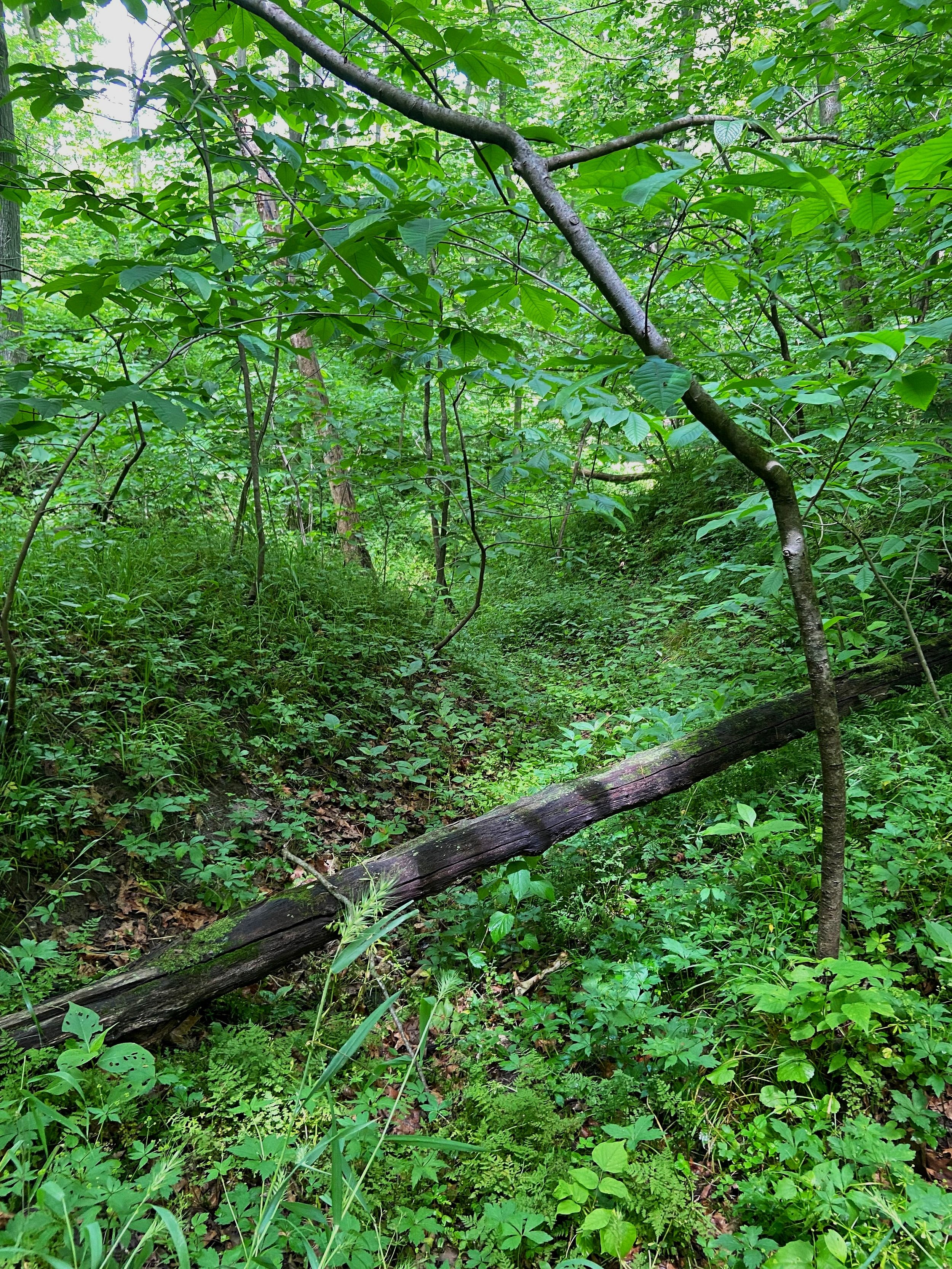
Plant Combinations: Send us photos of your favorite plant combinations
